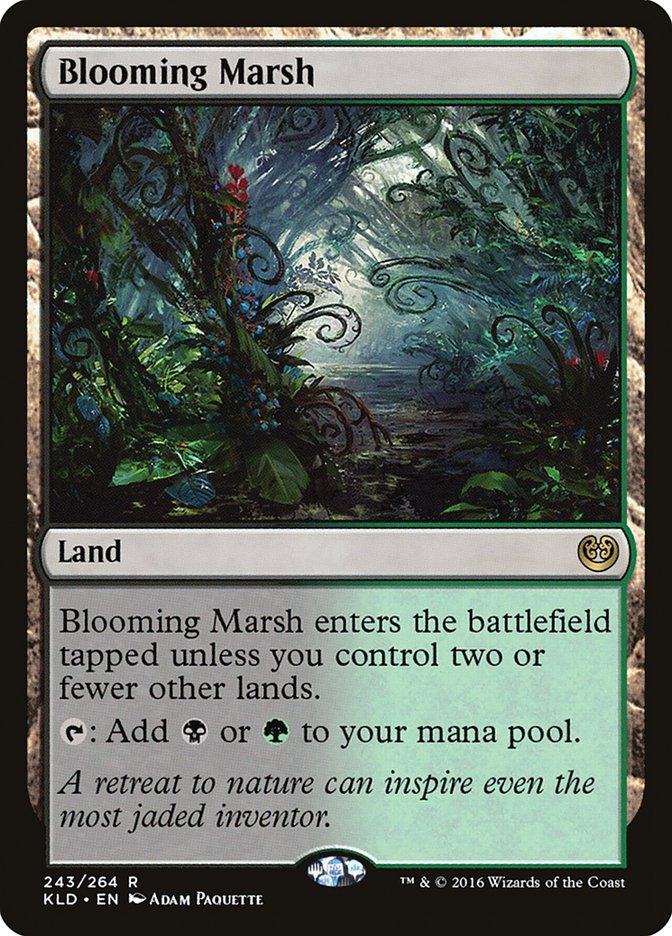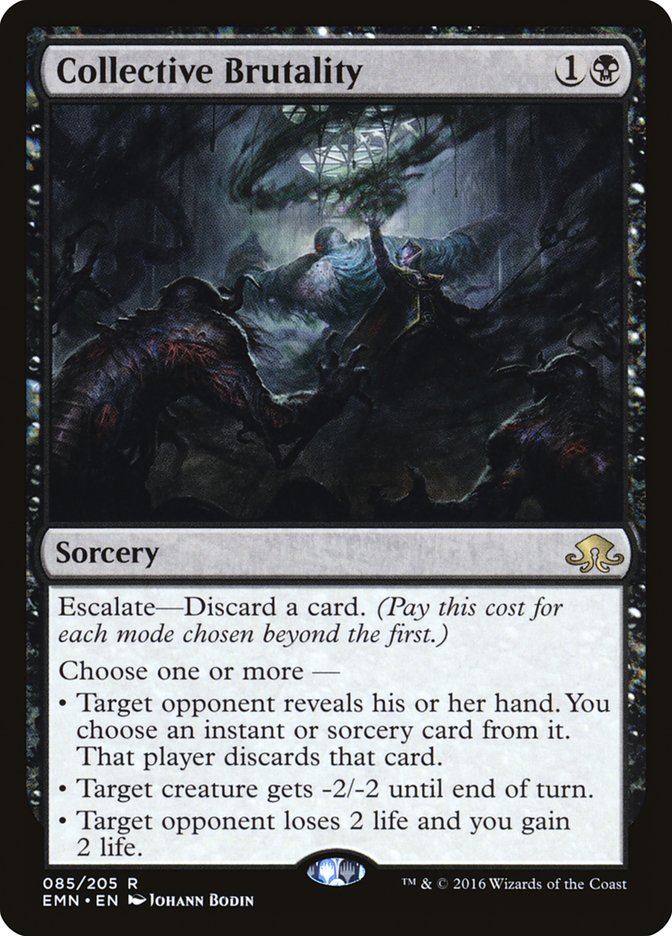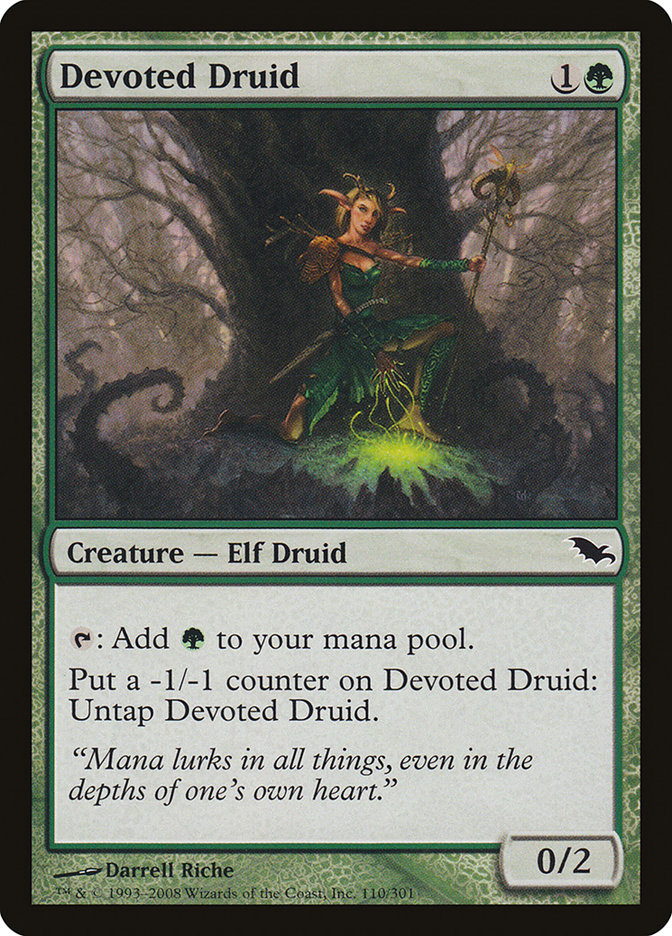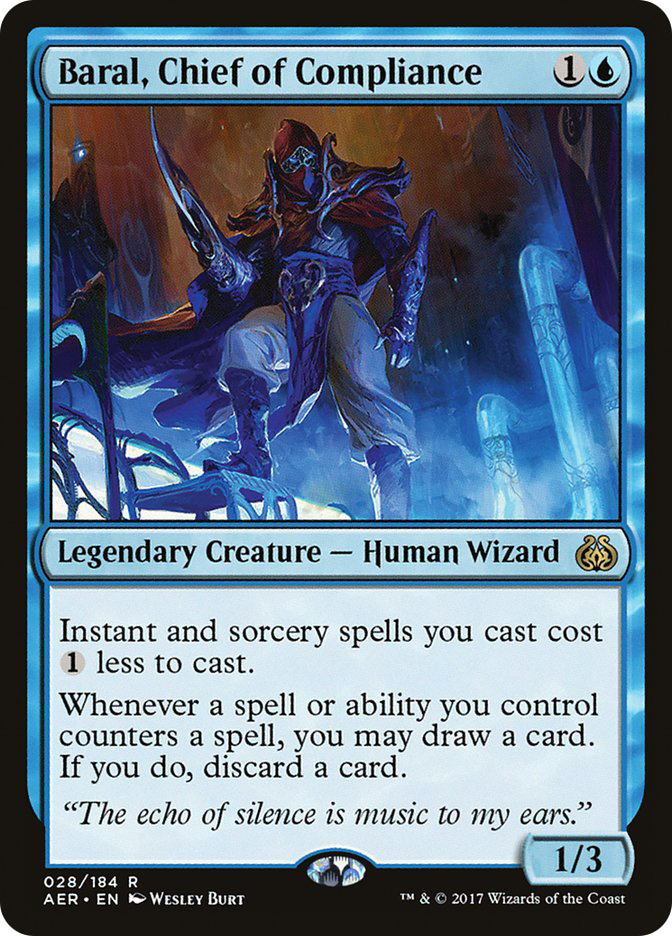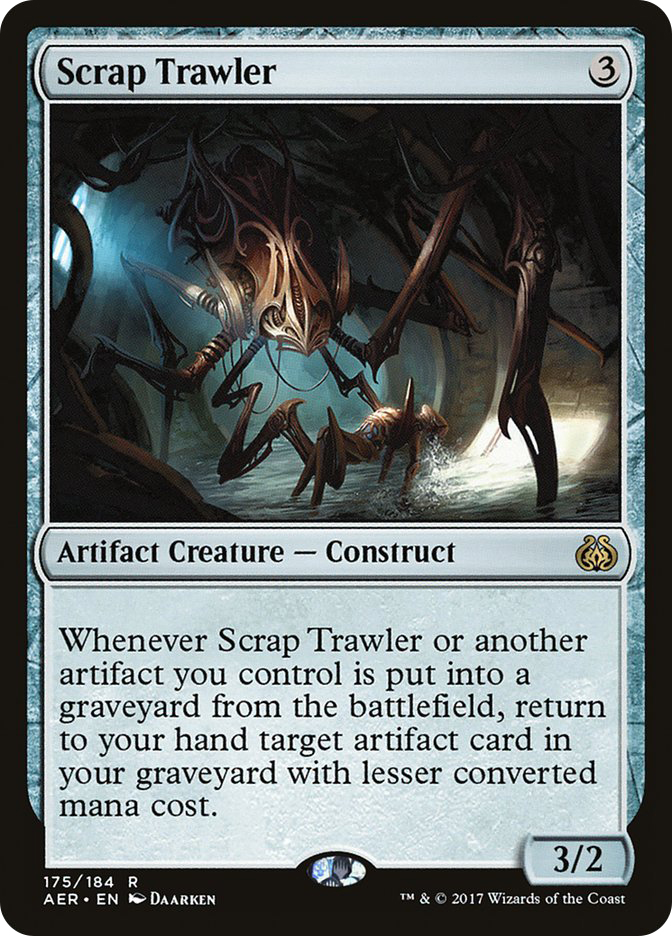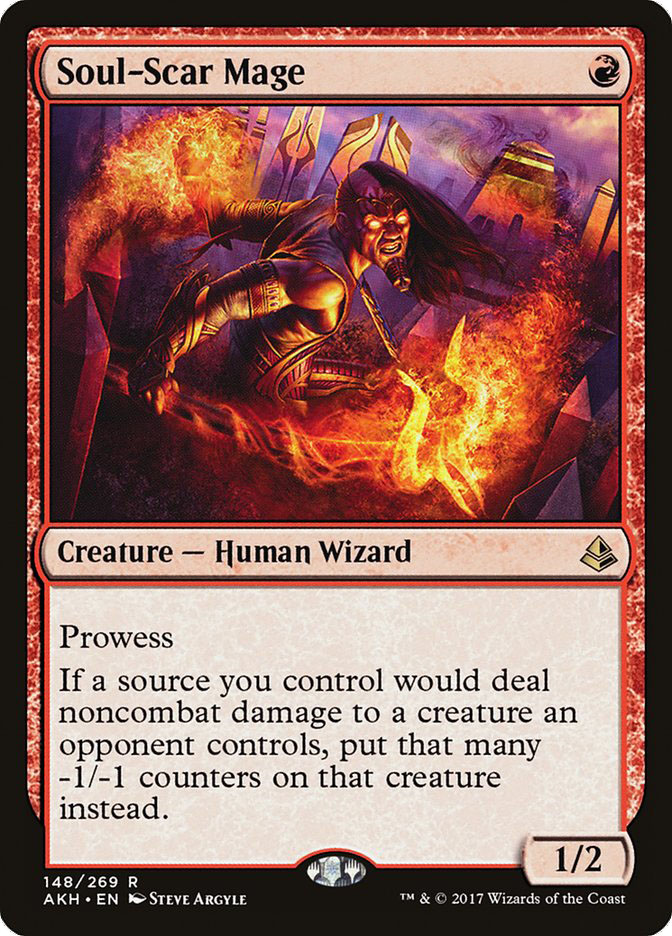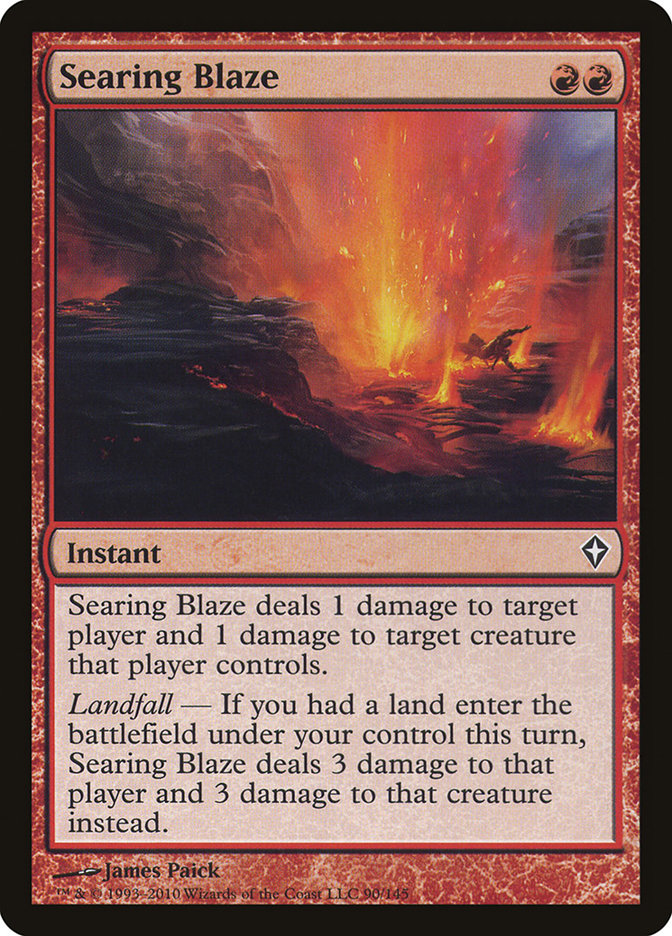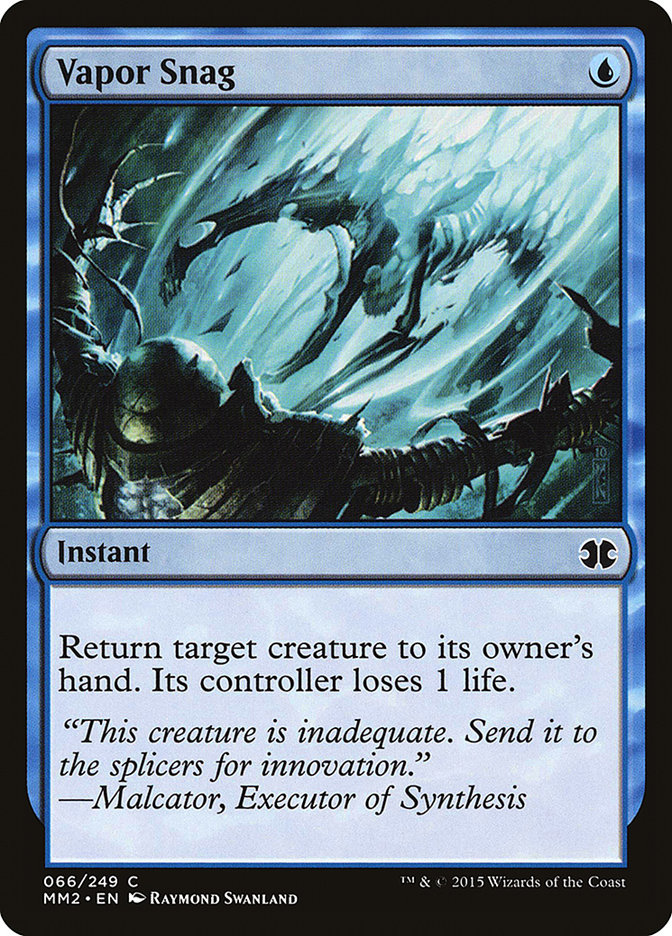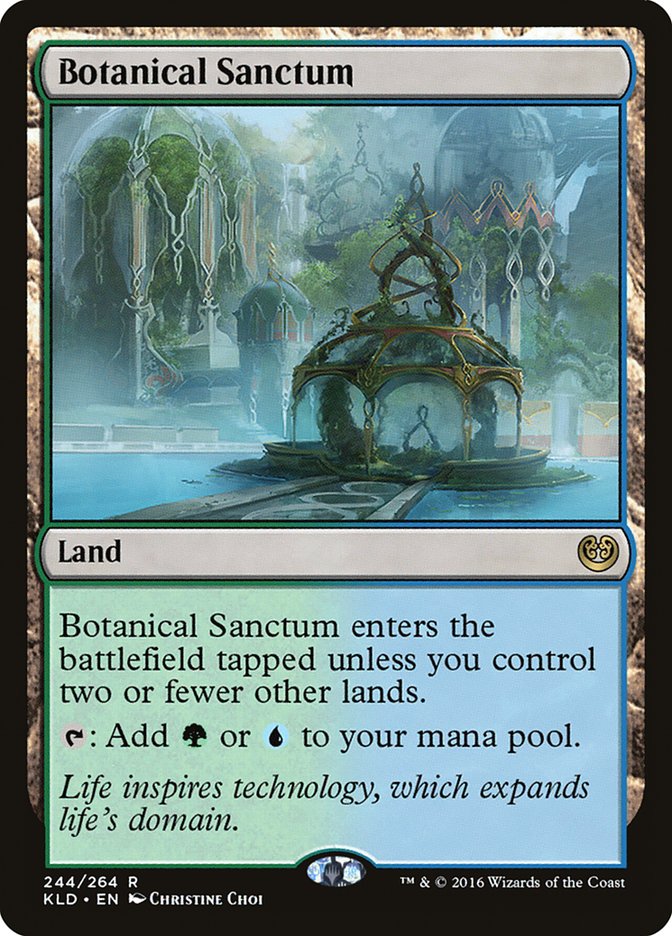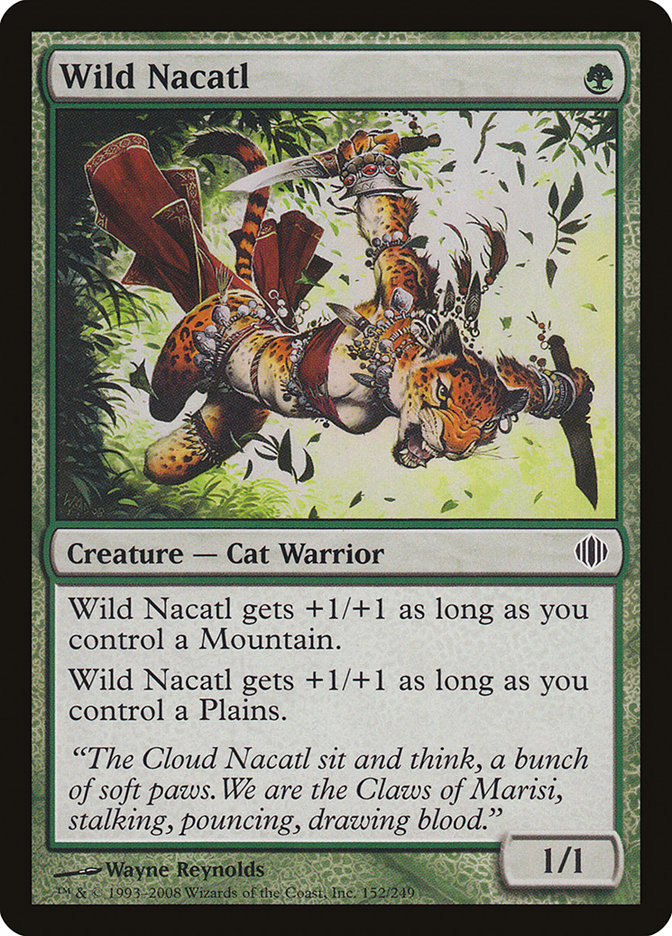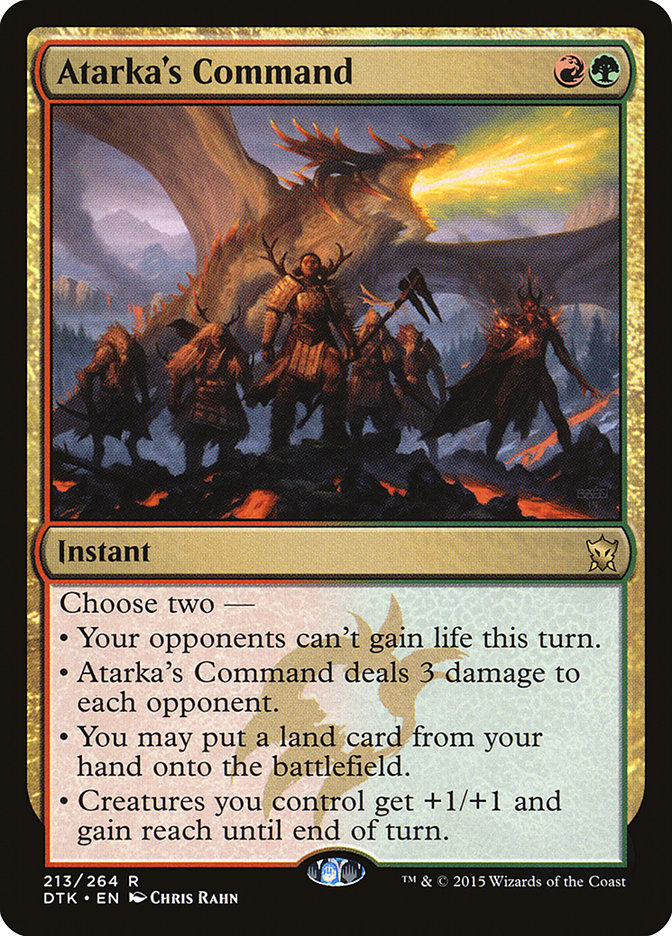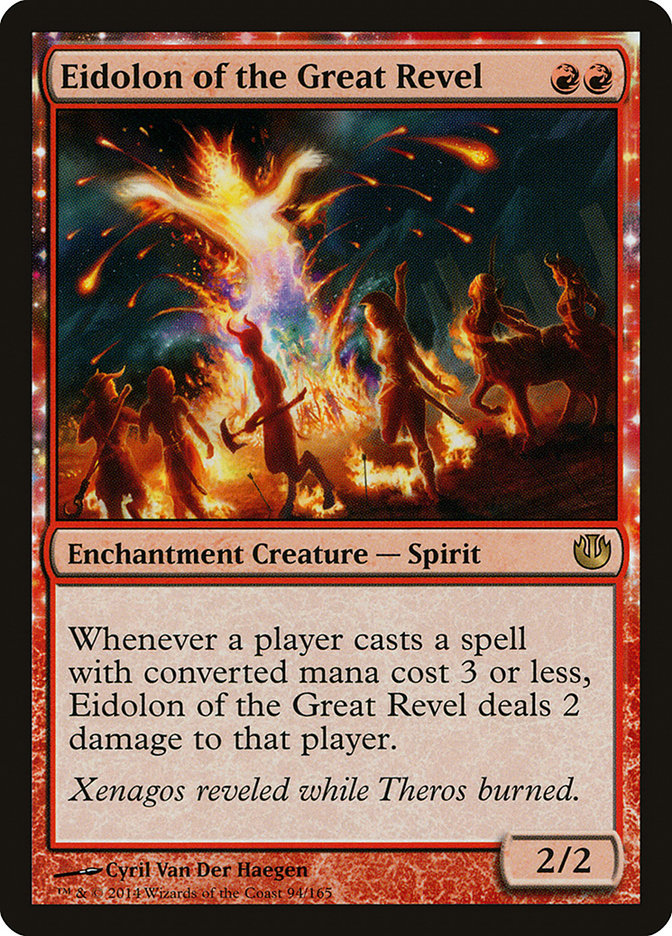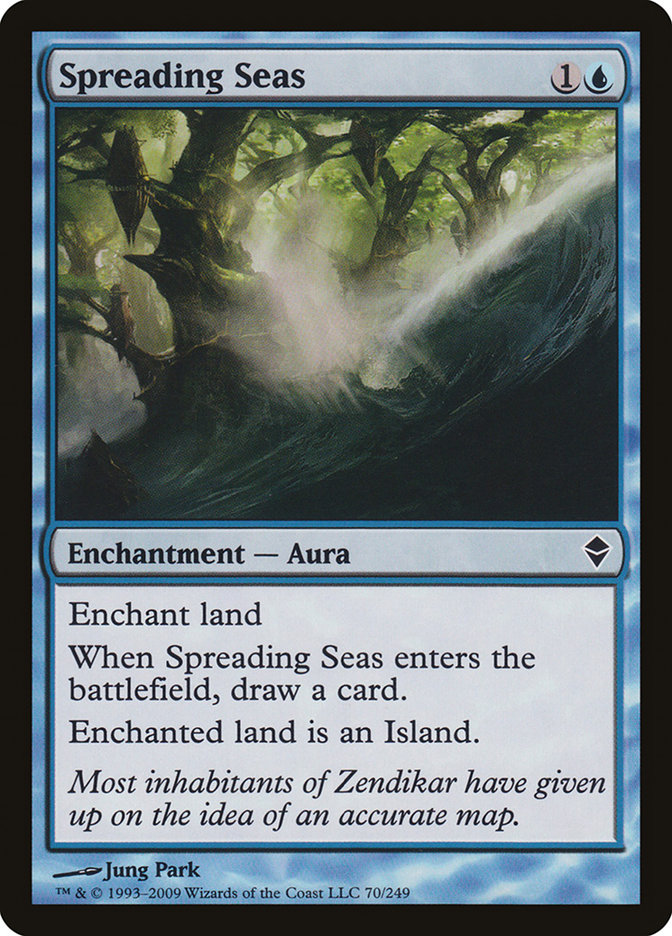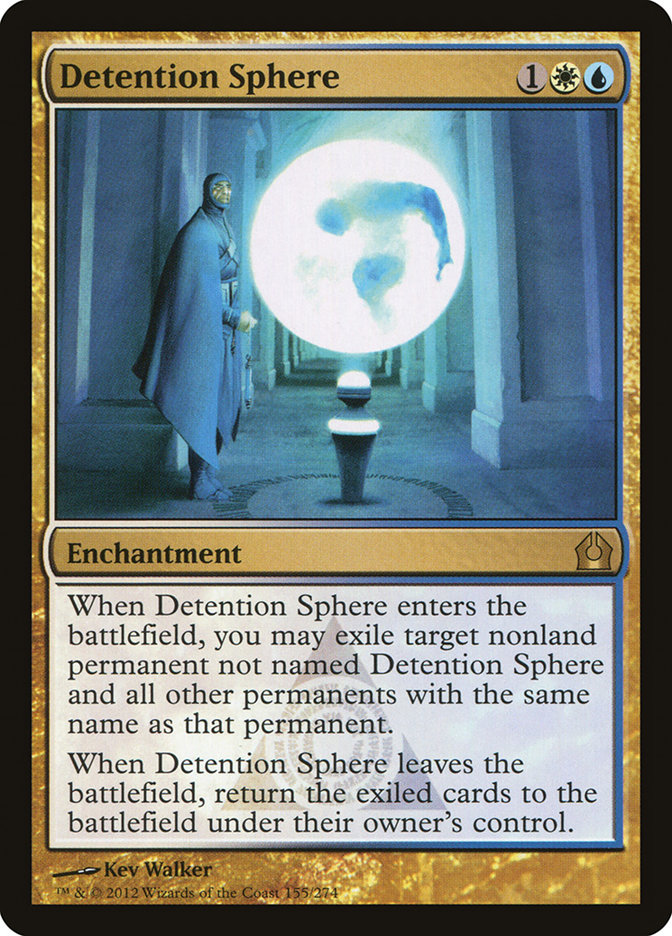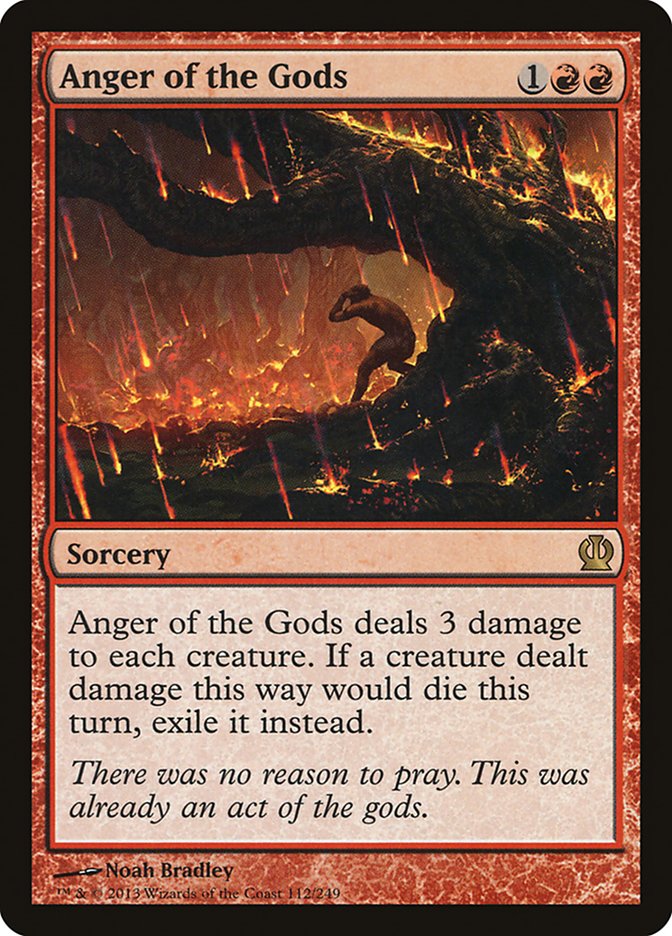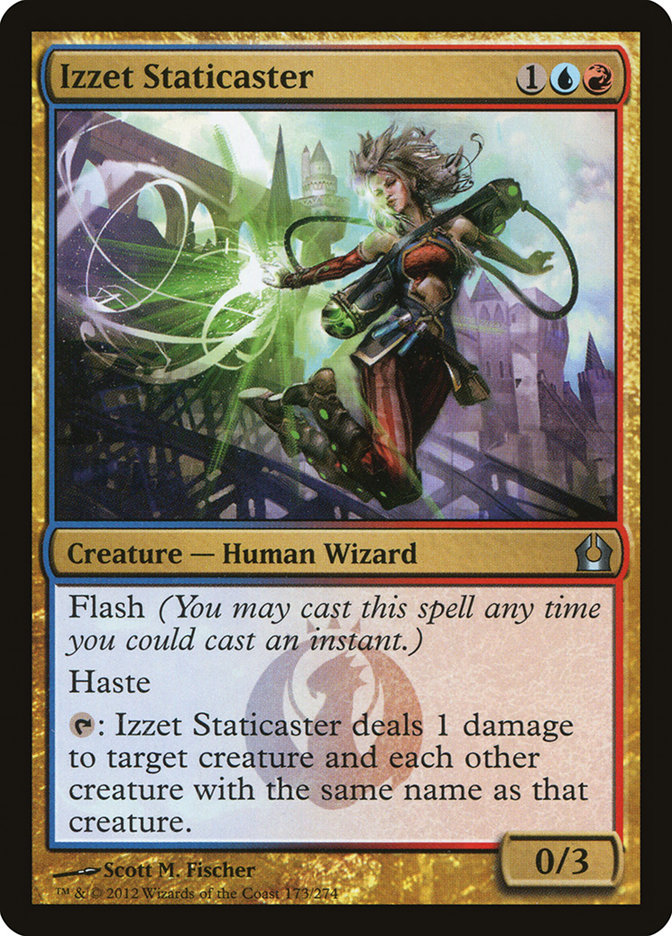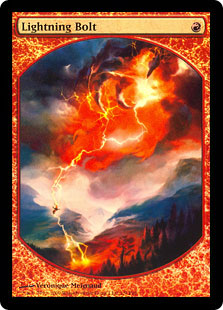Modern has taken an interesting turn in the last few months.
For the last few years, Lightning Bolt has been the defining card of the Modern format. Control decks would utilize it in conjunction with Snapcaster Mage to control the battlefield, midrange decks would use it as the cheapest and most efficient removal option, and aggressive decks would use it because it’s also a Lava Spike. At any given Modern event, there was a very good chance that Lightning Bolt was the most-played card in the room.
This is no longer true. Why, you say?
The biggest reason is that the major threat base of the format has changed.
Lightning Bolt doesn’t kill a single creature in most Death’s Shadow decks, nor does it touch many in the popular Eldrazi core seen in Eldrazi Tron and Bant Eldrazi. It’s also not very useful against decks like Dredge or combo decks like Ad Nauseam. Lightning Bolt also, for the first time in the history of the format, now has some serious competition.
Fatal Push serves a very similar purpose to Lightning Bolt in many decks— it is a one-mana removal spell that is the most efficient way to kill creatures in the early-game. The fact that it can also hit Tarmogoyf, Death’s Shadow, Thought-Knot Seer, and friends has given it the serious edge lately. Lightning Bolt is no longer a necessary card if you want to control the battlefield for one mana.
A quick word on Path to Exile: yes, Path to Exile is a one-mana removal spell on par with both Lightning Bolt and Fatal Push. However, it is also not a card you want to cast on turn 1. Hitting a Noble Hierarch or Goblin Guide on turn 1 with Path to Exile really exposes the drawback of the card, and it is usually better used in the mid-game when the land doesn’t matter as much. As such, it does not serve a purpose that directly compares to Lightning Bolt or Fatal Push.
The last reason for the push away from Lightning Bolt is the effect the new fastlands have on the format, coupled with Collective Brutality’s power against aggressive Lightning Bolt decks.
The new fast lands have made manabases much less painful, and those few points of life over a large sample of games really add up. I’m not Frank Karsten, so I’m not going to try to run any crazy numbers, but it’s safe to assume that decks are taking one to two less damage from their lands on average each game, and that’s a very big deal for decks looking to end the game by pointing Lightning Bolt at their opponent’s face.
Collective Brutality also has almost singlehandedly held Burn in check lately. Seeing your Goblin Guide die, losing your best burn spell, and watching your opponent gain some life is quite the nightmare for any Burn player, and having been on both sides of a Collective Brutality in the Burn matchup, its potency is clear.
Given all these factors, it makes sense why Lightning Bolt has fallen off lately.
However, Modern is always changing.
While conditions have not been favorable for Lightning Bolt lately, this is starting to shift once again.
The new Counters Company deck, based around the Devoted Druid plus Vizier of Remedies combo, is the hot new deck on the block, and boy does it have a lot of targets for Lightning Bolt. Newer combo decks like Storm and Krark-Clan Ironworks that rely on creatures (Baral, Chief of Compliance and Scrap Trawler, respectively) are starting to pick up steam as well, and Lightning Bolt actually interacts with both quite well.
Lightning Bolt is too good of a card to be held down, so let’s look at three Lightning Bolt decks poised to make a comeback.
Creatures (16)
Lands (18)
Spells (26)
- 4 Lightning Bolt
- 4 Serum Visions
- 4 Lava Spike
- 4 Gitaxian Probe
- 4 Vapor Snag
- 2 Faithless Looting
- 4 Thought Scour
Sideboard

Devil Delver was a pet deck I toyed around with at the end of last year. I was looking to build a deck that melded the quick clock of Burn with the card-drawing power of Bedlam Reveler, and while the deck was very sweet, it felt a bit lacking.
My biggest complaint with the deck was that I couldn’t play more copies of Monastery Swiftspear. Monastery Swiftspear has always been a solid card in Burn decks, but in a deck with a bunch of card draw cantrips, it is the best card in the deck by a mile. If only we could play more copies…
Just because red is bad in Standard doesn’t mean we haven’t gotten good new red cards! I’ve been huge on Soul-Scar Mage since the Amonkhet preview season, having built a number of aggressive red decks in Standard with the card, but none of them were worth pursuing and Soul-Scar Mage was left behind.
Soul-Scar Mage is a very good Magic card. Monastery Swiftspear is an amazing card that’s pretty above the curve, and removing haste for a relevant ability is more than fair. With a solid density of one-mana prowess threats, we can cast our cheap spells with impunity and attack for large chunks of damage without having to resort to clunkers like Stormchaser Mage.
Soul-Scar Mage’s ability is also fairly relevant, allowing us to mow down Kitchen Finks with no fear of persist and shrink larger creatures down to size. Soul-Scar Mage synergizes very well with both Grim Lavamancer and Searing Blaze, as using Searing Blaze to shrink their 4/5 Tarmogoyf and deal three damage sounds fantastic in a race.
It’s also hard to properly express how good Vapor Snag is against all of the creatures listed at the top of the article that Lightning Bolt is bad against. This is perhaps the best Vapor Snag deck in the history of Modern, and the card feels like a one-mana Searing Blaze that can hit anything. Vapor Snag is the truth.
Creatures (16)
Lands (19)
Spells (25)

We’ve abandoned the Bedlam Reveler portion of the deck in favor of Grim Lavamancer and Snapcaster Mage and are left with a more explosive Burn deck that has many more sideboard tools available for defeating fast combo decks.
While I am sad to leave Bedlam Reveler behind, the loss of Gitaxian Probe as well as the deckbuilding restrictions it creates just feel like too much to overcome. Still, if you are interested in playing an updated Devil Delver list, start here:
Creatures (15)
Lands (19)
Spells (26)

One of the fears I had with the U/R Prowess deck was that it was just a worse Burn deck, so let’s take a look at the original gangster and see how Burn is faring.
As we spoke about earlier in the article, the prevalence of Collective Brutality as a sideboard card and the popularity of various new fastlands have certainly taken Burn down a peg or two in Modern. So what can we do to fix this?
It’s time to turn back to Wild Nacatl.
Many of the recent Burn decks have moved to straight R/W, eschewing both Wild Nacatl and Atarka’s Command for a more streamlined plan. While this makes the deck a little faster on its best draws, it does not work nearly as well when things are going wrong. Consistent damage sources are the name of the game when beating cards like Collective Brutality or getting enough damage across the battlefield against opponents who are making you deal the full twenty, and Wild Nacatl is one of the best possible consistent damage sources that Burn has access to. Wild Nacatl plus Atarka’s Command also gives you a much faster goldfish, as a flurry of one-mana creatures plus a Lava Spike and Atarka’s Command on turn 3 is often enough to fuel a turn 3 kill.
It’s also great to be able to take advantage of the relative lack of Lightning Bolts in the format. Lightning Bolt is one of the best cards against Burn, as it offers cheap interaction at a very low cost. If people want to skimp on Lightning Bolts, slam some creatures and make them pay.
Don’t forget how great of a card Eidolon of the Great Revel is, either. Wild Nacatl helps to distract their copies of Fatal Push, and if you can stick Eidolon of the Great Revel, you’re almost always in great shape. Eidolon is also a card that is almost unbeatable Game 1 against some of the newer combo decks like Storm and Krak-Clan Ironworks, and very good against any deck playing cards like Serum Visions or Traverse the Ulvenwald.
Creatures (18)
Lands (20)
Spells (22)

The quick rise and prevalence of the new Abzan Counters deck greatly increases the value of cards like Searing Blaze and Grim Lavamancer, and their lack of removal allows your creatures to roam free. With so many threatening, consistent damage sources, you can be a little more liberal with using your burn to disrupt what your opponent is doing without the fear of running out of spells to burn your opponent out with. Careful play also gives the deck a solid Death’s Shadow matchup, and the power of Eidolon of the Great Revel and speed of Atarka’s Command helps a ton against combo decks.
Burn is a deck that never goes away, and recent metagame shifts may have led to what it takes for Burn to rise again.
Our last deck is an oldie but a goodie.
One of the more interesting shifts in the Modern metagame in the last few months has been the rise of U/W Control as a viable deck. With Lightning Bolt coming up short in many matchups, cutting red from Jeskai Control entirely begins to make a lot of sense.
Creatures (4)
Planeswalkers (2)
Lands (23)
Spells (31)
- 2 Mana Leak
- 4 Serum Visions
- 1 Crucible of Worlds
- 2 Condemn
- 1 Spell Snare
- 4 Ancestral Vision
- 4 Cryptic Command
- 4 Path to Exile
- 4 Spreading Seas
- 2 Supreme Verdict
- 2 Detention Sphere
- 1 Blessed Alliance
Sideboard

Banking on a very solid matchup with Death’s Shadow and game everywhere else as well, U/W Control has taken over as the de facto best control deck available in Modern, but its win conditions are slow and leave something to be desired. Giving your opponent time in Modern is often a death knell, and without a way to turn the corner quickly, games can often slip away.
If only we had a good win condition for our control deck that could win the game quickly…
Oh…hello, old friend.
Moving from Jeskai Control to straight U/W Control makes a lot of sense when Lightning Bolt is an underperforming card in the format, but Nahiri, the Harbinger is irreplaceable as a win condition that can turn the corner swiftly while also affecting the battlefield. With the recent shifts in the format skewing things back in Lightning Bolt’s favor and an already established shell of U/W Control, let’s turn things Jeskai again.
Creatures (5)
Planeswalkers (5)
Lands (23)
Spells (27)

Borrowing elements from both old-school Jeskai Control decks and the newer U/W Control decks, our new version of Jeskai Control looks to battle through the early- and mid-game; land a Nahiri, the Harbinger; and end the game in one fell swoop with an ultimate that grabs Emrakul, the Aeons Torn. Many of the elements from the U/W Control deck remain, with playsets of Lightning Bolt and Nahiri, the Harbinger being the only red cards in the maindeck.
With a full playset of Spreading Seas and a few copies of Detention Sphere, this deck is more tapout-oriented than the older Jeskai Control deck. Spreading Seas is a subtly great card which not only acts as a cantrip Stone Rain against many decks but also helps to pre-sideboard against Tron decks that would normally be a bad matchup for us. Detention Sphere is also a very versatile tool that can serve as a catchall against matchups like Dredge and Ad Nauseam that are normally difficult Game 1.
Red also gives us access to some powerful sideboard cards that U/W Control can’t cast. Anger of the Gods is a very important tool against both Dredge and Collected Company decks, with Izzet Staticaster also looking to mow down armies of small creatures.
Counter Company is going to be a very popular deck at #SCGBALT this weekend, and if you’re looking to shred small creatures while still being able to turn the corner quickly, this is a great deck for the job.
Don’t Call It a Comeback
Lightning Bolt may not be putting up the numbers it once did, but don’t expect that to last for long. A deck that is over half creatures is the new hotness in the format and players are starting to feel like their life totals are safe once again. It’s time to dust off those Lightning Bolts and make them pay.
Whether you’re flashing it back with Snapcaster Mage, triggering the prowess on your Soul-Scar Mage, or just going upstairs after a flurry of Lava Spikes, have fun casting Lightning Bolt this weekend. You can thank me later!






